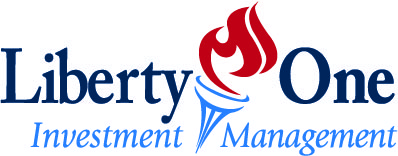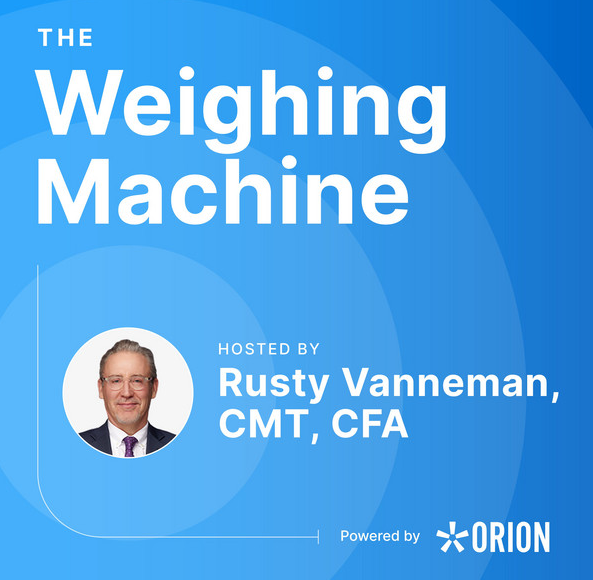On March 4th I sat down at a kitchen table with two new clients in Elkhorn, WI. The husband recently retired after 41 years with the same employer. They were referrals from an existing client, and I had been working with them for roughly six months prior to his retirement – planning, running numbers, and constructing an overall gameplan for how their monthly income would be structured post-retirement.
The March 4th meeting was what I refer to as a “dust settle” meeting. The 401(k) rollover occurred just after his 12/31 retirement date, various accounts were funded, monthly income was being deposited into their joint checking account, and online access was in place for all of their accounts. Everything was up and running as we had discussed in late December. The “dust had settled” and this was the meeting I do with clients to walk them through any needed additional details now that everything is in place.
I like “dust settle” meetings. These meetings bring a sense of tangibility to clients as everything seems a little more “real” to them. By this time, account numbers, statements, income streams, withholding, usernames and passwords have all come full circle. It also creates an additional element of trust as the plan I put together becomes a reality.
Shouldn't Retirement Be Fun?
These meetings are always fun and positive. Retirement is an exciting time for clients. In the months leading up to retirement, it is common for clients to feel a sense of nervous uncertainty alongside their excitement. By the time the “dust settle” meeting comes around, clients are seeing their monthly income post to their accounts, social security payments are coming in, and many of those early nerves are subdued. By this time, a sense of comfort has been established. Retirement is in full swing, and the income is coming in like clockwork.
This March 4th meeting was a little different. After exchanging normal pleasantries and small talk, then pouring me a cup of coffee as the meeting was kicking off, the husband said, “I sure got unlucky with my retirement.” For the record, I knew exactly why he felt that way and I arrived at the meeting with everything I needed to proactively calm any nerves that may be bubbling up inside them, but he beat me to it. For him, it was very top of mind, and he jumped right in. My experience has taught me if I show an instant understanding of why he feels so unlucky (without first giving him a chance to explain why), then I inadvertently validate his concerns. I know why he feels the way he does. But I do not want to validate those concerns by jumping ahead of him. Instead, I simply responded with, “Retirement is one of the most exciting times of your life. You’ve spent the last 41 years providing for your family, raising some great kids, paying off all your debts, setting money aside in your 401(k) every paycheck, and now you get to enjoy the fruits of all that labor. You should feel a strong sense of pride and excitement. What makes you feel so unlucky about your retirement?”
Then he went down the road I knew he was going to go down. His exact words were, “This whole mess going on in Ukraine, everything the market is doing right now, it’s just bad timing. I got unlucky with the timing.”
Always Something To Worry About
I then went on to say, “One of the things I’ve learned in 17 years of doing this is the fact that it’s always something. There will always be something to worry about. Major events like the dot com bubble, 9/11, the financial crisis of 08’ and 09’, Greece and the European debt crisis, Covid, and the Ukraine-Russia situation, hit markets hard. Beyond that, there are countless variables that can increase market volatility that can last any number of days, weeks, or months – interest rates, inflation, jobs reports, GDP outlook – you name it.”
There is always a “thing”. There is always something that is going to happen at some point that is going to shake things up a bit. My client spent 41 years saving for retirement. He had seen countless “things” cause his 401(k) to fluctuate along the way. He was not worried about it because he was not relying on his 401(k) to generate his monthly income. His paycheck was direct deposited every other week and the value of his retirement savings had no bearing on how he lived his life. Now that he is retired, there is an additional level of awareness and emotion placed on the value of his nest egg. In his mind, the value of that nest egg is now more important than ever. That nest egg is tasked with partially funding their monthly income – and thus impacting how they pay their bills and live their lives.
After talking through what he was thinking and feeling, after framing his concerns and illustrating that I hear him and understand why he feels the way he does – how such an exciting time in their lives can leave him with a sense of feeling “unlucky,” I went on to say, “there is always going to be a ‘thing’. Right now it’s Ukraine-Russia, next year it is going to be something else, and after that it will be something else again. The ‘thing’ will always change. But something that will never change is the fact that it will always be my job to insulate you and your retirement savings from whatever is going on in the world.”
This was naturally the perfect time for me to transition to the topics and material I had planned on walking them though when I arrived for the “dust settle” meeting. I came to reinforce the plan that is now in place and how it is designed to help ensure a long and comfortable retirement – regardless of what may be going on in the markets. Current events made it even easier to highlight and reinforce why we structured things the way we did.
Manage With Precision
Brian Dodds, of Dodds Wealth Advisors, and a longtime colleague of mine has a great and very timely saying. He says, “Now is not a great time to be in the stock market, but it is a great time to be in the market for stocks.” In other words, it is a great time to be on investor, but you need to be selective. For the past ten years I have favored individual equity positions over ETFs and Mutual Funds. ETFs and Mutual Funds are broad-based vehicles that often own hundreds and sometimes even thousands of underlying positions. At some point, you might as well just own the whole market because it all ends up behaving about the same.
Strategies that zero in on specific companies within specific sectors can insulate clients from broad market downturns. The clients I reference in this article are taking advantage of exactly that. One of the accounts that make up their “income bucket” is simply comprised of 24 individual equity positions invested in six “recession resistant” sectors. These are companies that generate consistent demand for their goods and services regardless of what is going on in the broad market or economy. All 24 companies fall into either consumer food, consumer staples, utilities, telecommunications, pharmaceuticals, or durable technology.
Perhaps most importantly, all 24 companies pay a strong and consistently increasing dividend. The increasing part is particularly important in today’s inflationary environment. As a financial advisor, how can I help clients offset high inflation? – by surrounding them with increasing income streams.
Companies who fit the bill for this particular strategy have strong pricing power, capital-light business models, strong balance sheets, above average operating margins, and strong consumer brand loyalty. Afterall, when is the last time you changed your brand of toothpaste? Did you stop brushing your teeth in 2008 or 2009? The company who produced the formula for your toothpaste had to invest capital in creating that toothpaste just one time. All these years later the investment that company made in creating the toothpaste you use today is still paying dividends (literally and figuratively).
Investing in these types of companies reduces volatility, increases dividend resiliency, and capitalizes on the rotation from growth to value that is currently playing out in the broad market. The Ukraine-Russia conflict just happened to be the event that played out shortly after these clients retired. But regardless of which events unfolded and when they unfolded, these 24 companies would have been in their allocation, paying dividends, reducing volatility, and allowing for ample long-term appreciation.
Separate Income Power from Account Value
What About Annuities?
There is another type of account I like to run alongside my individual equity, dividend-paying, and volatility-managed account. I like using variable annuities in some instances. A solid VA carrier with a well-constructed living benefit can often play a key role in a client’s long term income plan.
The individual equity strategy I described earlier is slanted heavily towards large-cap value domestic holdings. The sub-accounts within the variable annuity are where I pick up exposure to large-cap growth, mid-cap, small-cap, and international holdings. Naturally, companies that fall into these types of sub-accounts do not have strong income components tied to them. That’s where the living benefit comes in. The living benefit allows me to attach an income stream to a category of assets that traditionally do not have an income component tied to them. Best of all, the income power of that living benefit is not tied to the fluctuation within the underlying account. The income power behaves independently.
So How Does This All Tie Together?
For these particular clients, they require a 4.5% income stream to be generated from their savings to complement their social security. I would love to be able to provide them with a stable, ever-increasing 4.5% dividend yield from their individual equity strategy, but we all know that is not possible these days.
In this case, 60% of their retirement savings went into the “recession resistant” dividend strategy and 40% went into a variable annuity that offers open architecture sub-account design along with a well-designed living benefit. At their age, the joint living benefit payout is 4.25%. That’s an income stream that is not tied to the account value.
Regarding the 60% in the dividend strategy, the divided yield alone covers more than half the annual drawdown they need from this account. The principal drawdown ends up being only about 2% per year above and beyond the dividend paying power of the account – and keep in mind, that is only on 60% of the overall pie.
In the end, none of the income these clients are receiving from social security, annuity living benefits, or rising dividends are tied to the market or subjected to possible market fluctuations. Their excess drawdown from their advisory account is so small in the grand scheme of things, that they have practically nothing to worry about when it comes to the income-paying longevity of their nest egg. Almost none of their income power tied to the market at all.
Final Thoughts
I reinforced to my clients during our March 4th “dust settle” meeting that it’s not my job to react to current events when they happen – it’s my job to plan for my clients and insulate them from these types of events before they happen.
By the time the meeting was over the conversation had shifted from fears around the Ukraine-Russia situation, to talks about their upcoming trip to Arizona to visit their son, the plans they have to put an addition on their property in Northern Wisconsin, and the walleye fishing trip the husband is looking forward to going on with his brother this spring.
The moral to the story is the simple fact that there is no perfect time to retire. There is always going to be “something” going on. Depending on current events, that “something” will always be different, but the one thing that will always stay the same is the fact that clients seek peace of mind and understanding as to how their income will be generated through retirement. As advisors, it is our job to give them that peace of mind.


